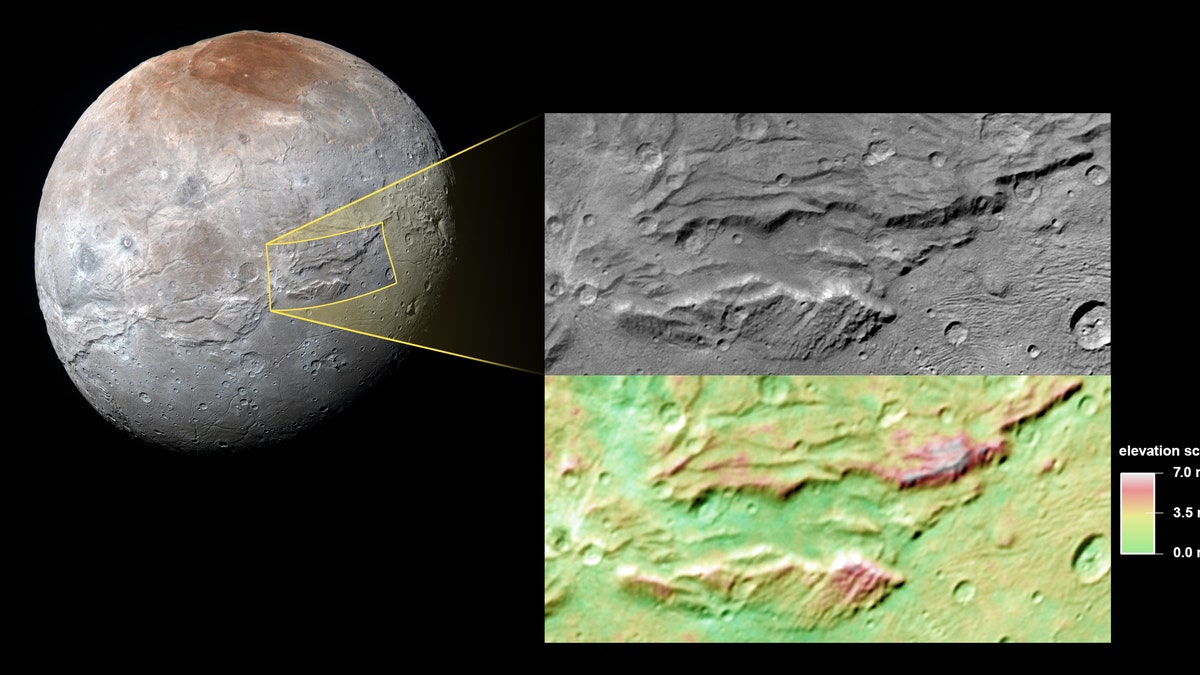
(NASA/Johns Hopkins University Applied Physics Laboratory/Southwest Research Institute)
Pluto’s largest moon Charon may have once had a subsurface ocean that long ago became frozen and expanded.
As a result, the expanding ocean that was identified through images from NASA’s New Horizons mission may have pushed out the moon’s surface – causing it to stretch and fracture on a massive scale, NASA said.
The side of Charon viewed by the passing New Horizons spacecraft in July 2015 is characterized by a system of “pull apart” tectonic faults, which are expressed as ridges, scarps and valleys—the latter sometimes reaching more than 4 miles deep. Charon’s tectonic landscape shows the landscape expanded in the past and the frozen ocean is the most likely cause.
Related: NASA offers up stunning view of Dione divided by Saturn's rings
Scientists have long known that Charon’s outer layer was primarily water ice. But when the moon was young, this layer was warmed by the decay of radioactive elements, as well as Charon’s own internal heat of formation – warm enough to cause the ice to melt and form a subsurface ocean.
As Charon cooled over time, this ocean would have frozen and expanded.
In the image featured here, the top segment focuses on a section informally named Serenity Chasma, part of a vast equatorial belt of chasms on Charon. This system of chasms is one of the longest seen anywhere in the solar system, running at least 1,100 miles long and reaching 4.5 miles deep. By comparison, the Grand Canyon is 277 miles long and just over a mile (1.6 kilometers) deep.
Related: NASA: Pluto has hills of water ice 'floating' on a sea of frozen nitrogen
The lower portion of the image shows color-coded topography of the same scene. Measurements of the shape of this feature tell scientists that Charon’s water-ice layer may have been at least partially liquid in its early history, and has since refrozen.
